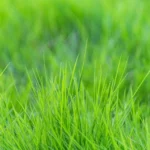
Common purslane is a hardy herbaceous plant in the purslane family. It is thought to have originated in the Mediterranean region, but it can now be found all over the world. Common purslane does not require a lot of water or nutrients to grow well. It easily colonizes new areas and is usually classified as a weed outside of its native range. Many people have changed their minds about this plant after learning (via various medical journals) that common purslane is not only delicious, but also extremely beneficial to human health.
The smooth, reddish prostate stem of common purslane can grow to be 14 inches long.
The leaves of common purslane are soft, succulent, and dark green, and they are arranged in clusters at the stem joints and at the ends of the branches.
Yellow flowers are produced by common purslane. Individual flowers can be seen in the center of the leaf clusters.
Purslane, or common purslane, blooms all year. Flowers bloom early in the morning and last only a few hours. The common purslane plant is a self-pollinating and wind-pollinating plant.
The common purslane fruit is a tiny pod filled with tiny black seeds.
Seeds and stem cuttings are used to propagate common purslane.
Purslane is high in protein, fiber, vitamins A, C, and E, as well as minerals like iron, magnesium, calcium, and potassium. Unlike other leafy vegetables, common purslane contains a high concentration of omega-3 fatty acids.
Common purslane’s thick leaves have a salty and sour (lemony) flavor. They can be stir-fried, served as a side dish with fish or chicken, or used as an ingredient in soups and curry. Because of their high mucilaginous content, leaves can also be used as thickening agents in soups and stews.
The seeds of common purslane are used to make a herbal drink, the flower buds as an ingredient in salads, and the stem is usually consumed in the form of stews.
Purslane, or common purslane, has been shown to improve the function of the gastrointestinal and cardiovascular systems, as well as blood circulation. It can also be used to prevent the development of certain types of cancer, atherosclerosis, and muscle degeneration, as well as to increase bone strength.
Because of its high antioxidant content, common purslane helps to prevent the formation of wrinkles and scars on the skin.
In traditional Chinese medicine, common purslane is used to treat snake and insect bites, dysentery, diarrhea, postpartum bleeding, and skin sores.
Purslane, especially common purslane, can cause miscarriage and should be avoided during pregnancy. It is also not recommended for people who have kidney stones due to the high oxalic acid content of the leaves.
Purslane, or common purslane, is an excellent companion plant. It provides nutrients and moisture to neighboring plants while also “guiding” their roots into deeper soil layers.
The life cycle of common purslane is one year (annual plant).










Your writing is like a ray of sunshine on a dreary day – it never fails to lift my spirits and brighten my mood. Thank you for bringing so much joy to your readers.
I wanted to reach out and extend my deepest gratitude for the incredible value your blog brings to my life. Your dedication to delivering captivating and thought-provoking content is truly awe-inspiring. Your writing style effortlessly weaves together knowledge and passion, creating an immersive experience for your readers. Thank you for enriching my intellectual journey and fueling my curiosity.